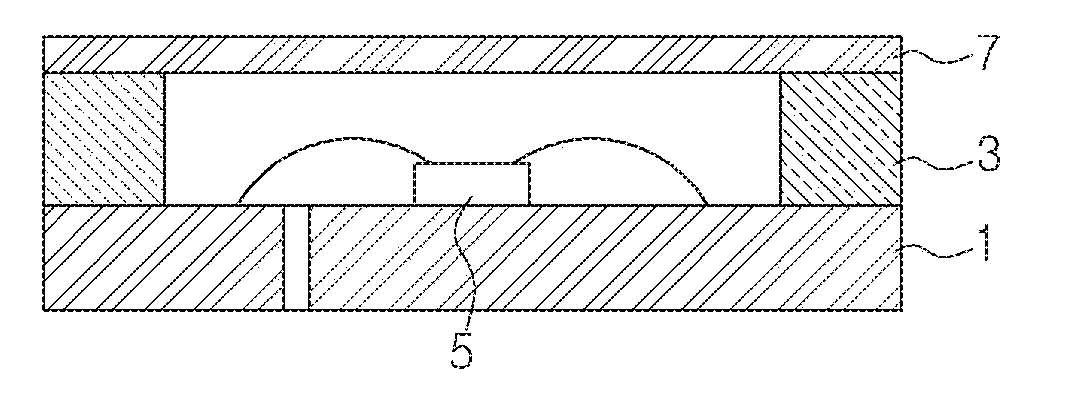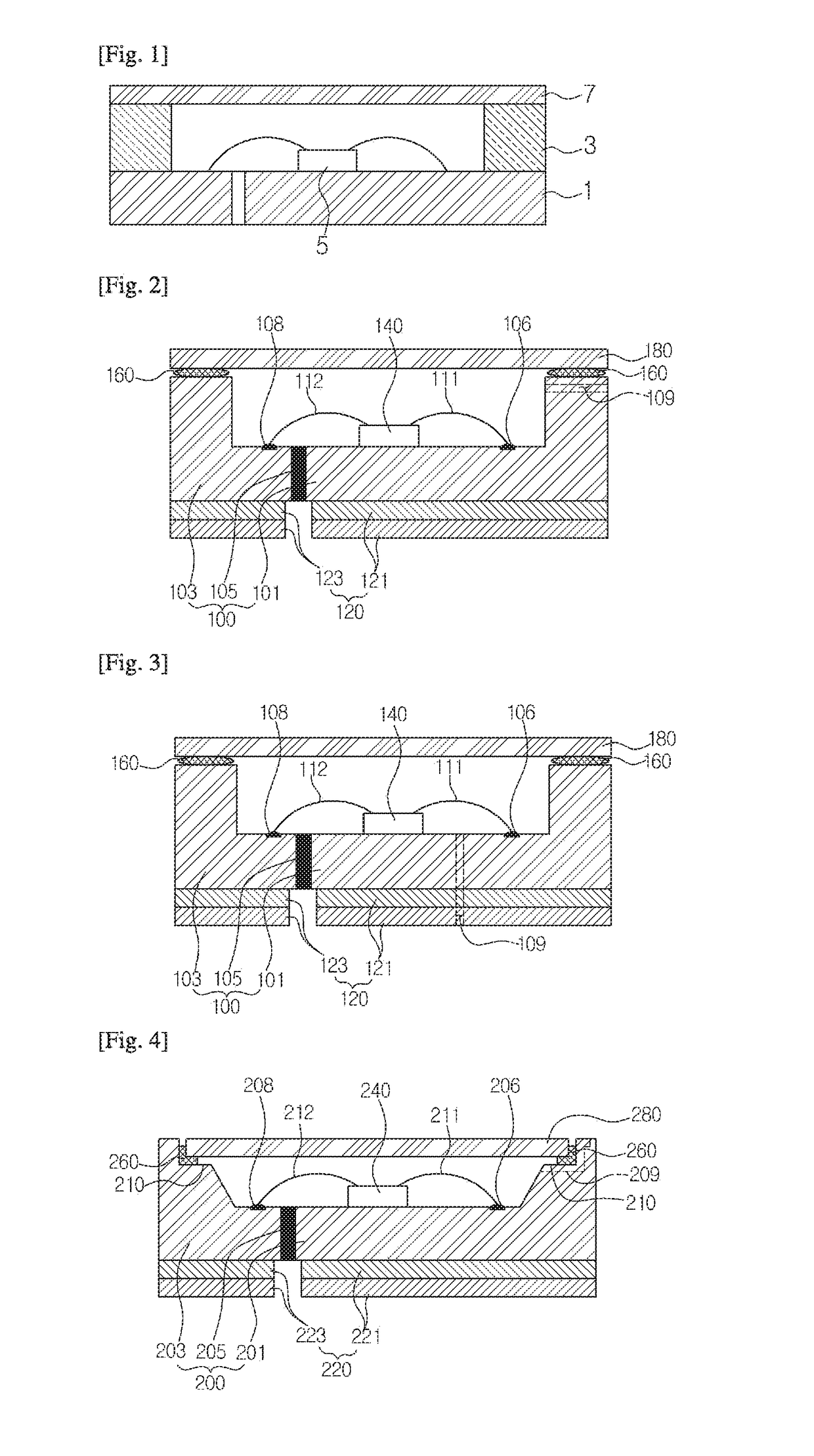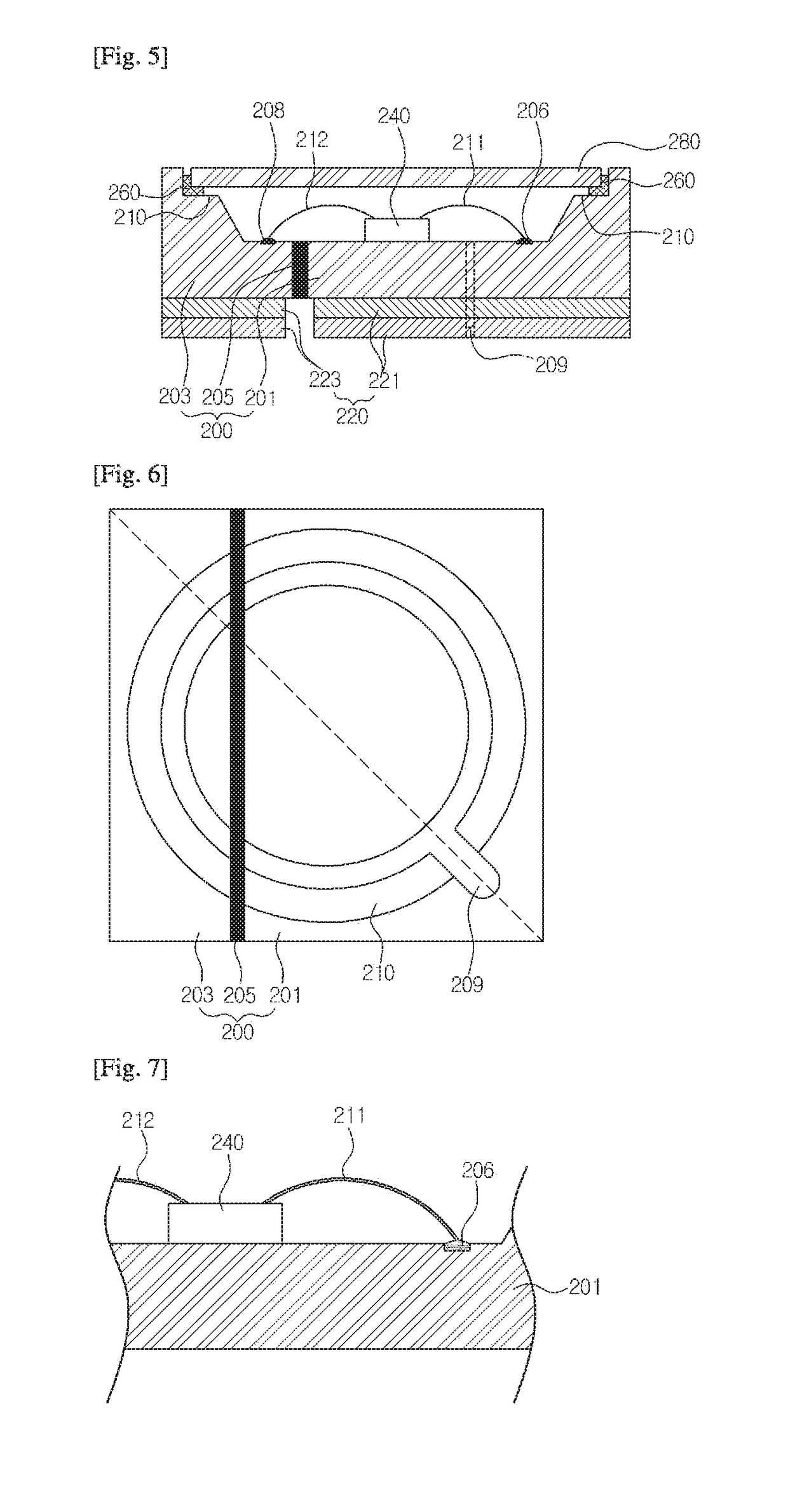Light-emitting device and method of manufacturing the same
a technology of light-emitting devices and manufacturing methods, which is applied in the direction of semiconductor devices, basic electric elements, electrical apparatus, etc., can solve the problems of deterioration of light-emitting devices, inability to easily dissipate the heat generated in packages, and dissipation of heat generated, so as to improve thermal properties and electrical connection properties.
- Summary
- Abstract
- Description
- Claims
- Application Information
AI Technical Summary
Benefits of technology
Problems solved by technology
Method used
Image
Examples
embodiments
[0168]FIG. 2 is a cross-sectional view showing a light-emitting device according to an embodiment of the present invention.
[0169]Referring to FIG. 2, the light-emitting device according to this embodiment comprises a frame portion 100, an electrode portion 120, a light-emitting portion 140, a buffer portion 160 and a window portion 180.
[0170]The frame portion 100 has a first frame 101, a second frame 103 and an insulating separation layer 105. The frame portion 100 has a depressed central portion. Thus, the internal space defined by the frame 100 includes a light-emitting portion 140, and the light-emitting portion 140 is sealed by the buffer portion 160 and the window portion 180. Thus, the frame portion 100 defines the bottom and sidewall of the light-emitting device.
[0171]The first frame 101 is made of a metal material and preferably has aluminum or an aluminum alloy. The light-emitting portion 140 is provided on the first frame 101. Also, the first frame 101 forms the bottom and...
PUM
 Login to View More
Login to View More Abstract
Description
Claims
Application Information
 Login to View More
Login to View More - R&D
- Intellectual Property
- Life Sciences
- Materials
- Tech Scout
- Unparalleled Data Quality
- Higher Quality Content
- 60% Fewer Hallucinations
Browse by: Latest US Patents, China's latest patents, Technical Efficacy Thesaurus, Application Domain, Technology Topic, Popular Technical Reports.
© 2025 PatSnap. All rights reserved.Legal|Privacy policy|Modern Slavery Act Transparency Statement|Sitemap|About US| Contact US: help@patsnap.com



